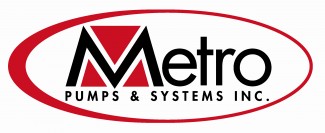
Blog
Vertical Turbine Pumps Part 2
Posted by: admin | Posted on: September 5th, 2012 | 0 Comments
“I like all the features and benefits of vertical turbine pumps, but how do I make a selection and size the equipment?”
Well, for the most part, you would select the pump bowl assembly in the same way you would any other centrifugal pump.
You will need to know the Gallons per Minute and Total Feet of Head required. This would be dictated by the system head curve. In the old days, you would pull down all the pump manufacturers’ pump curves and start thumbing through pages and pages of curves in order to find a match. In today’s world, it’s as easy as going to our website, selecting a manufacturer’s site and using their pump selection program where you will be prompted to fill in some information about your application and press the search button. A list of pump curves and selection possibilities instantly appear.
Now it’s time to choose, of course you want the pump with the best efficiency, lowest NPSHr, smallest bowl size, least amount of stages and the slowest speed. Almost an impossible task! Pulling all this together is like having all the elements of a perfect storm come together.
Your next step in the pump selection process is to narrow the selection of curves. Normally, you would select the most efficient pump which meets your NPSHa.
Don’t forget size matters when it comes to cost. The larger the bowl size and the lower the speed of the motor will equate to higher cost. However, slower speeds when pumping water with solids, grit or sand will extend the life of the equipment.
More stages equal additional cost. Rule of thumb is the higher the RPM of the unit the less stages you will require to meet the system head requirement.
Now that you have taken all this into consideration, you should be left with one or two possibilities as far as a bowl selection goes. Now would be the time to price the bowl assemblies and consider the hydraulic selection when compared to cost.
You have selected the heart of the unit. Now it’s time to build the rest of the pump. At this point in the process you may want to work with one of the application engineers at Metro Pumps to assist you. Building a vertical turbine pump is like ordering from an a la carte menu. There is something to meet everyone’s expectations and needs.
The typical designed pump for a water application would be of open lineshaft design. This design allows all the bearings and rotating parts to be lubricated by the water being pumped. Standard materials would consist of a bowl assembly with bowls in cast iron and bronze impellers. The bowl assembly would have bronze sleeve bearings throughout. A galvanized steel strainer would be provided attached to a suction bell. The purpose of the strainer is to stop any debris which would be too large to pass through the bowl assembly.
The column assembly would be constructed with threaded steel pipe up to 14” in diameter, threaded 416 stainless steel shafting and couplings. Column supplied over 14” would be flanged. Column sections are supplied in 60” or 120” sections as required by maximum bearing spacing. This is determined by pump speed, shaft material and installation requirements. Diameters on column and shafting are determined by flow required and horsepower needed. The Total Pump Length, TPL, determines how many sections of column pipe will be required. The top column pipe is always the section that is not the standard 60” or 120”. Column sections are assembled with a threaded steel coupling that captivates a cast iron bearing retainer which would have the standard rubber bearing installed.
So far we have talked about all the equipment below grade which is unseen after installation.
What you find above grade is the sole plate, discharge head, packing box and motor. The sole plate would be supplied in steel or cast iron. The function of the sole plate is to mount the discharge head while supporting the weight of the complete pump and motor assembly. The sole plate covers the wet well access and must be leveled and grouted during installation. The discharge head would be supplied in cast iron and would be threaded to the column pipe. When flanged column pipe is used, the discharge head will be bolted. The discharge head is supplied with a standard cast iron stuffing box. The purpose of the stuffing box is to reduce the amount of leakage around the shaft. This is achieved by a split gland which is used to compress packing rings around the shaft coming through the stuffing box. The vertical hollow shaft motor will be mounted directly to the discharge head. An upper headshaft will be supplied to transmit power to the pump from the motor.
I have only described a typical standard vertical pump. As mentioned, there are hundreds of combinations available as far as design and materials of construction. Metro Pumps and Systems ensures the proper pump will be engineered for your application.
Look for more vertical pump information in upcoming e-News issues. If you have any questions in regard to a vertical pump application, please contact us.
Please visit our blog at www.metropumps.com to add comments to the discussion of pros and cons of vertical turbine pumps!
HAVE AN APPLICATION?
Send your request in TODAY to sales@metropumps.com for immediate attention!
About the Author
Vito Gullo has been part of the pump industry for 36 years with experience in all makes and models of pumps and rotating equipment. He has worked for major pump manufacturers as well as distribution. He is currently the President of Metro Pumps and Systems.
Email vgullo@metropumps.com for more information.
Additional Reading: Vertical Turbine, Mixed Flow & Propeller Pumps By: John L. Dicmas
Published By: McGraw Hill




